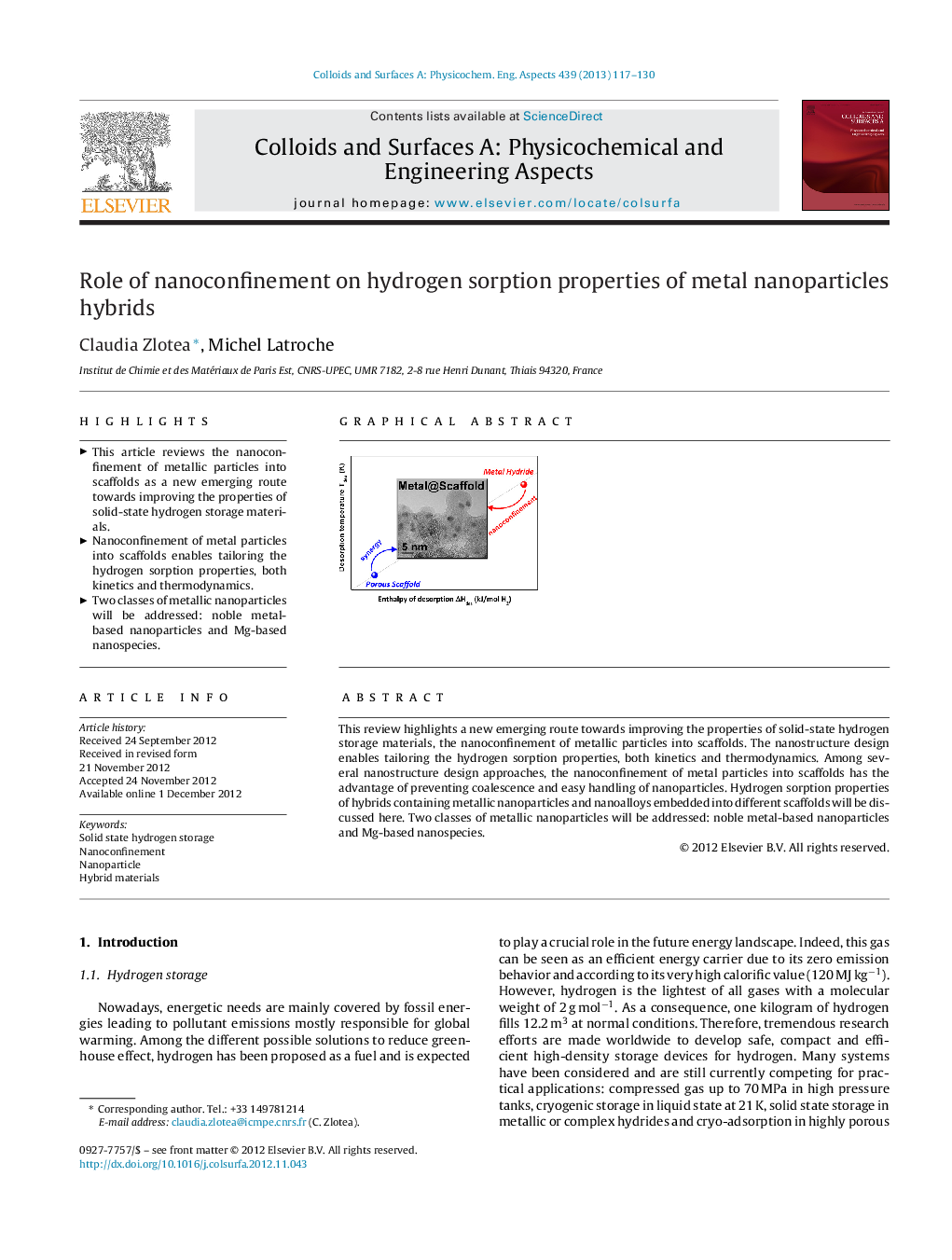| Article ID | Journal | Published Year | Pages | File Type |
|---|---|---|---|---|
| 593305 | Colloids and Surfaces A: Physicochemical and Engineering Aspects | 2013 | 14 Pages |
This review highlights a new emerging route towards improving the properties of solid-state hydrogen storage materials, the nanoconfinement of metallic particles into scaffolds. The nanostructure design enables tailoring the hydrogen sorption properties, both kinetics and thermodynamics. Among several nanostructure design approaches, the nanoconfinement of metal particles into scaffolds has the advantage of preventing coalescence and easy handling of nanoparticles. Hydrogen sorption properties of hybrids containing metallic nanoparticles and nanoalloys embedded into different scaffolds will be discussed here. Two classes of metallic nanoparticles will be addressed: noble metal-based nanoparticles and Mg-based nanospecies.
Graphical abstractFigure optionsDownload full-size imageDownload as PowerPoint slideHighlights► This article reviews the nanoconfinement of metallic particles into scaffolds as a new emerging route towards improving the properties of solid-state hydrogen storage materials. ► Nanoconfinement of metal particles into scaffolds enables tailoring the hydrogen sorption properties, both kinetics and thermodynamics. ► Two classes of metallic nanoparticles will be addressed: noble metal-based nanoparticles and Mg-based nanospecies.
